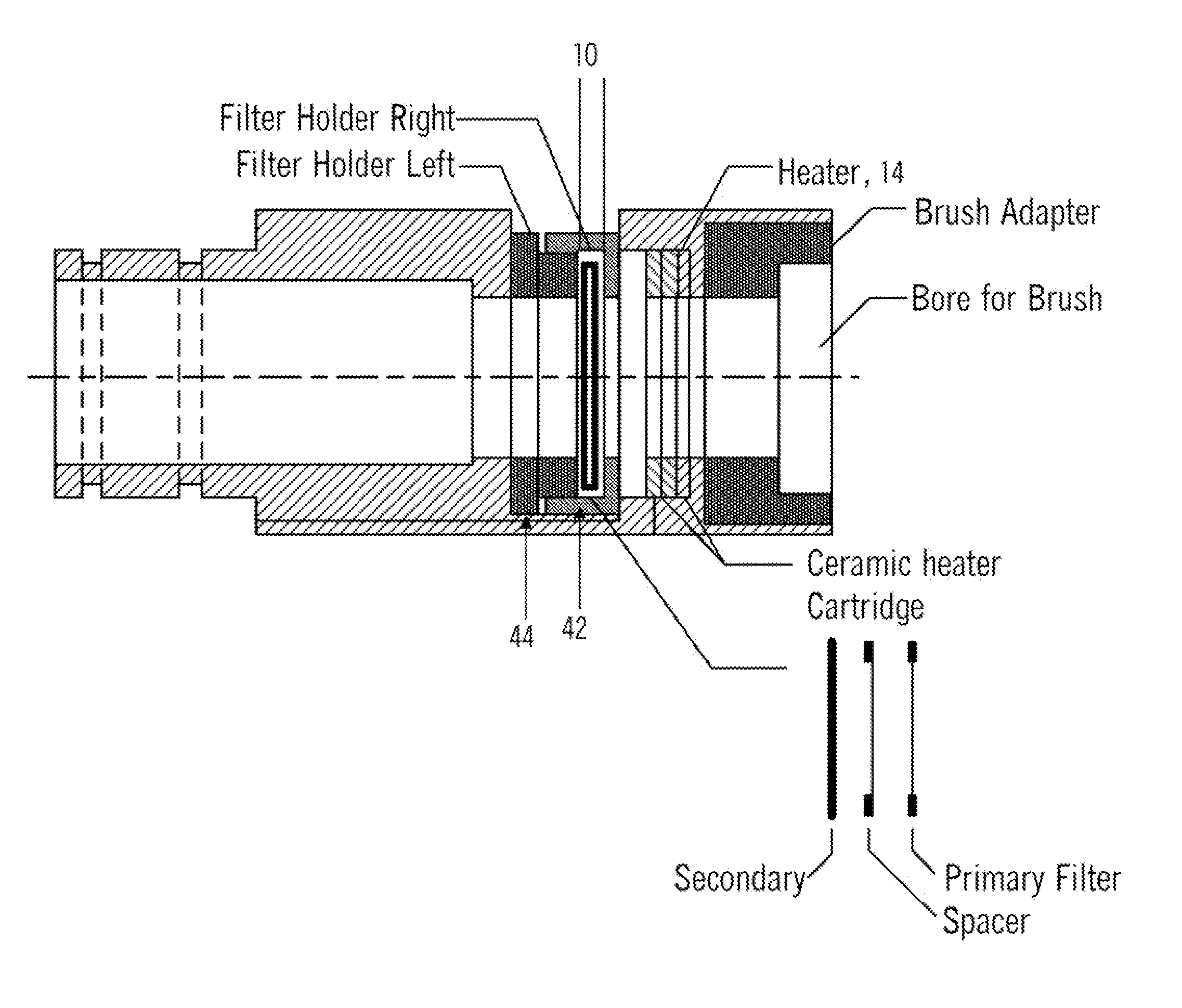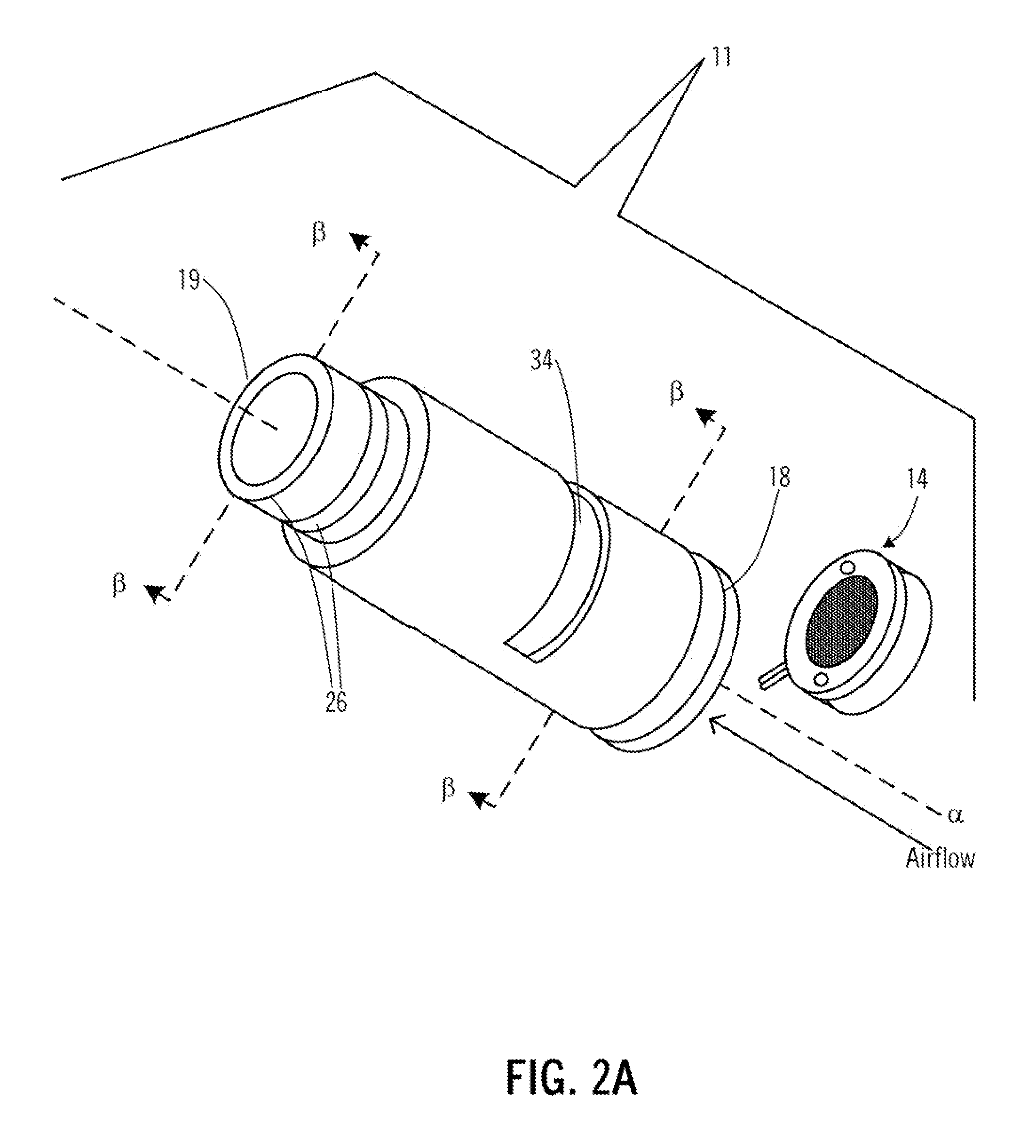High volume sampling front end collection device
a collection device and high-volume technology, applied in the field of high-volume sampling front-end collection devices, can solve the problems of affecting the movement of operators, requiring a large footprint in which to operate, and taking too much time to prepare liquid samples, etc., to achieve the effect of facilitating secondary filter transport, reducing costs, and reducing weight and size relative to state-of-the-art sampling systems
- Summary
- Abstract
- Description
- Claims
- Application Information
AI Technical Summary
Benefits of technology
Problems solved by technology
Method used
Image
Examples
Embodiment Construction
[0042]In describing exemplary embodiments of the high volume sampling device of the present disclosure illustrated in the drawings, specific terminology is employed for the sake of clarity. The claimed invention, however, is not intended to be limited to the specific terminology so selected, and it is to be understood that each specific element includes all technical equivalents that operate in a similar manner to
[0043]The invention provides a front end specimen collection device for use in detecting trace quantities of explosives, pathogens, and other target compounds accomplish a similar purpose in high volume throughput scenarios. The device is adaptable for use with typical detection equipment and analyzers. Sampling rates of the commercial vapor detectors are 1 to 4 Liters per minute in approximately ¼″ ID sample inlet. However, the HVS sampling rates are between about 40 to 400 Liters per minute thru a 1″ ID sampling port. The sample flow rates are a function of the power of t...
PUM
| Property | Measurement | Unit |
|---|---|---|
| inner diameter | aaaaa | aaaaa |
| temperatures | aaaaa | aaaaa |
| temperatures | aaaaa | aaaaa |
Abstract
Description
Claims
Application Information
 Login to View More
Login to View More - R&D
- Intellectual Property
- Life Sciences
- Materials
- Tech Scout
- Unparalleled Data Quality
- Higher Quality Content
- 60% Fewer Hallucinations
Browse by: Latest US Patents, China's latest patents, Technical Efficacy Thesaurus, Application Domain, Technology Topic, Popular Technical Reports.
© 2025 PatSnap. All rights reserved.Legal|Privacy policy|Modern Slavery Act Transparency Statement|Sitemap|About US| Contact US: help@patsnap.com



